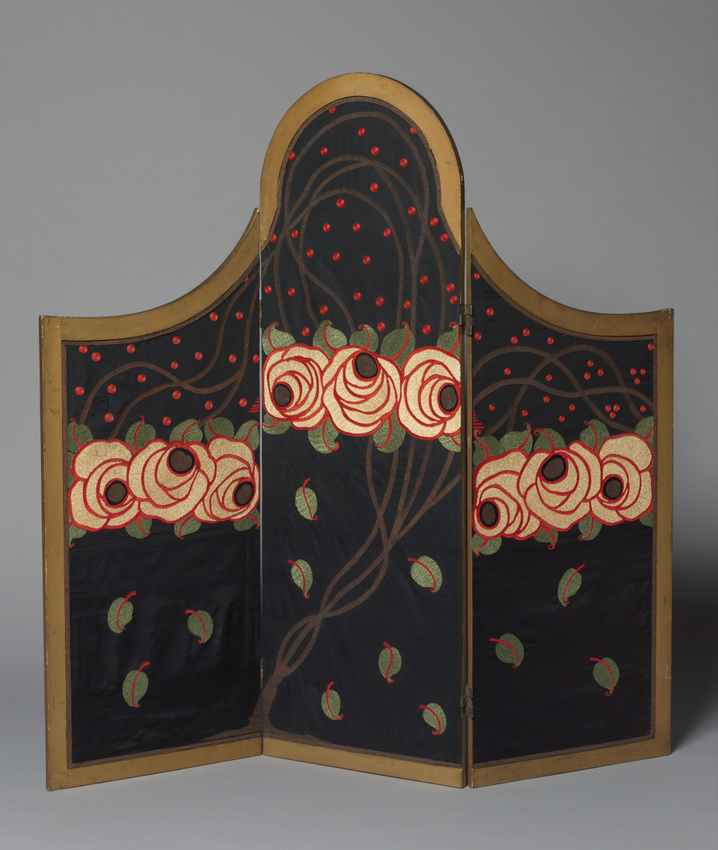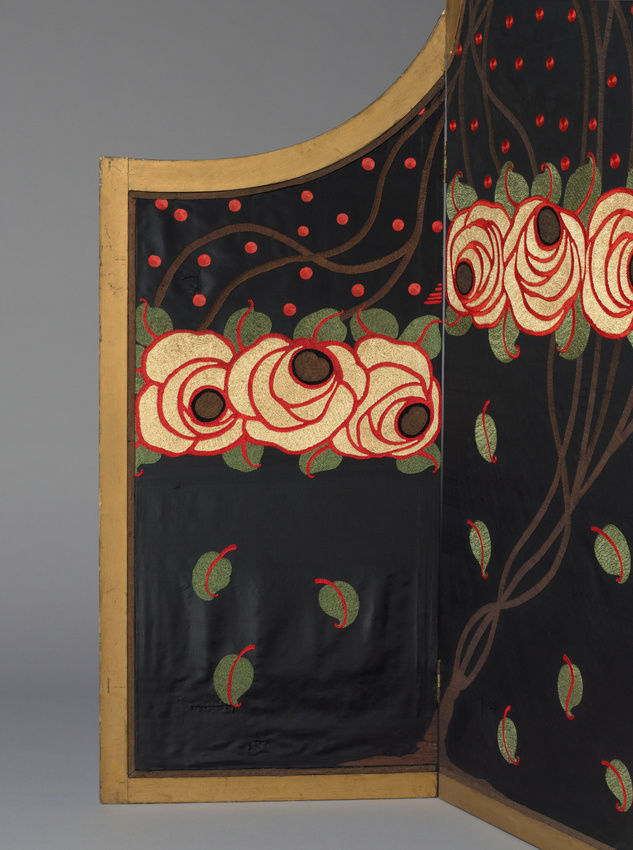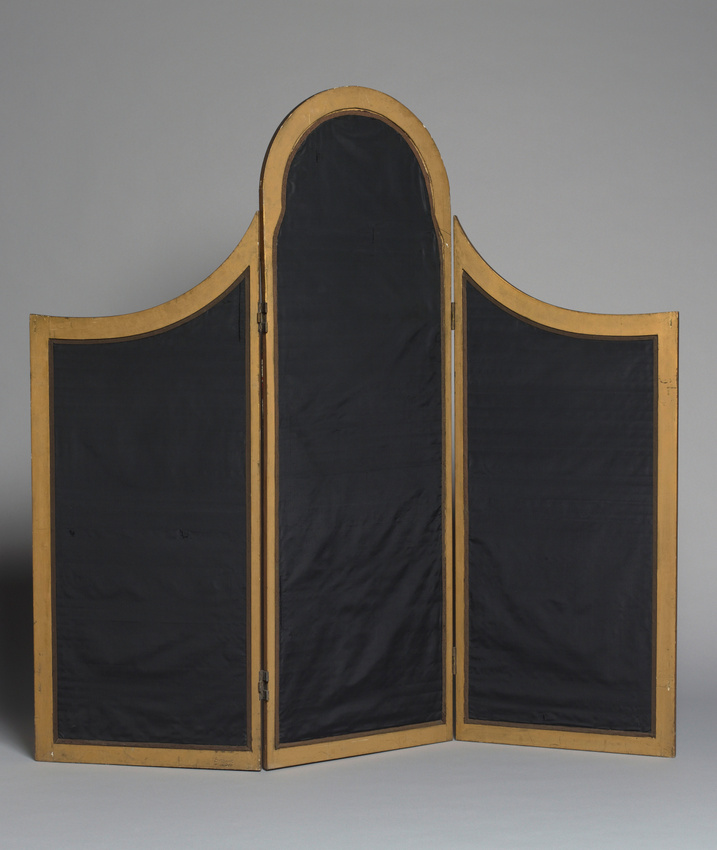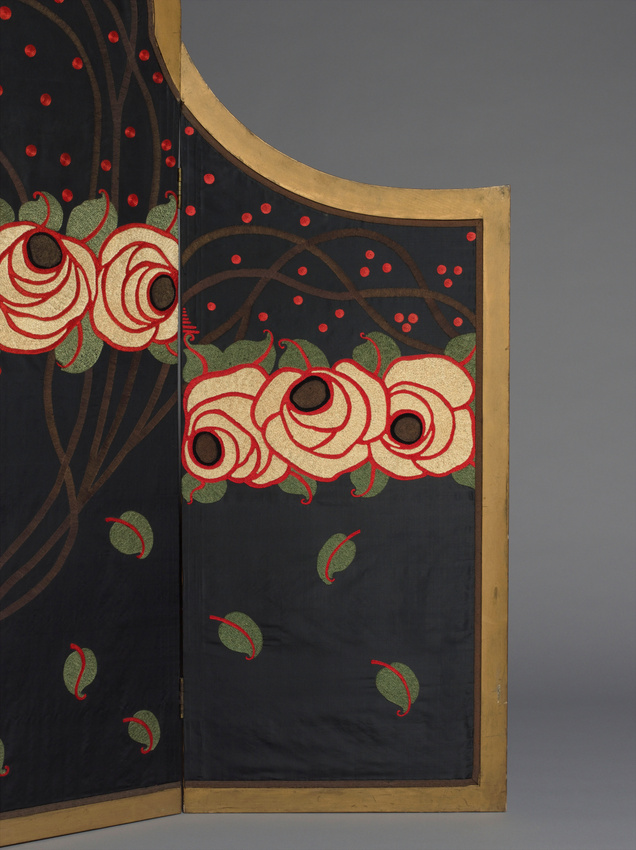Paravent à trois feuilles
This work constitutes a wonderful illustration of the decorative experimentation undertaken in the years leading up to the First World War, and in particular to that linked to the world of fashion. Often called, somewhat hastily, "the pre-Art Deco of fashion designers", it reveals a search for a new style which merits consideration for itself, despite its debt to Art Nouveau or the fact that it prefigures Art Deco.
During a trip he made in 1911 to Germany and Vienna, the famous fashion designer, Paul Poiret, was enchanted by the creations of the Wiener Werkstatte. Shortly after his return, he created the Maison Martine, offering furniture, furnishings and various accessories to an avant-garde clientele.
The decoration on this screen –a rambling rose full of heavy flowers, falling leaves and a sprinkling of drops– is noticeable for its brightness and its sobriety. The graphic style of the bush combines the remarkable arabesques of the stems and the roses with a rigorously geometric arrangement of the flowers in groups of three.
The embroidery and the shimmering harmony of the motifs on the black background certainly reflect the world of fashion, but a fashion influenced by the theatre, and in particular by the Ballets Russes that burst onto the Parisian stage in 1909. Finally, although a certain Viennese influence might be evident in the black backgrounds that was in fashion at that time, in the black fabrics threaded with gold and enhanced with sumptuous reds and in the ebony-veneered furniture, painted or decorated with lacquer, we should also note that in the 1910s, Chinese cabinets, embroidered screens and Japan lacquer work were also being reintroduced into interior design.





